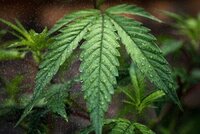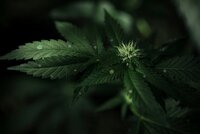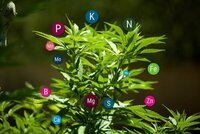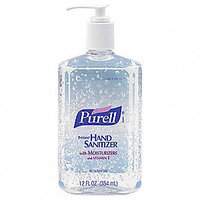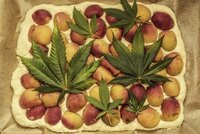Whalers?Another lovely logotype.
Bonus points if you guys knows this:

Crappy team, crappy logo...
Navigation
Install the app
How to install the app on iOS
How To Use Progressive Web App aka PWA On 420 Magazine Forum
Note: This feature may not be available in some browsers.
More options
You are using an out of date browser. It may not display this or other websites correctly.
You should upgrade or use an alternative browser.
You should upgrade or use an alternative browser.
DrCannaCanadian: MarsHydro & Seedsman, Soil & Coco, 2020
- Thread starter DrCannaCanadian
- Start date
yep,, hartford,, gordies team i think
- Thread starter
- #263
DrCannaCanadian
Well-Known Member

only cuz there was no canucks growin up for me,, ha..
least not to start with,, bruins fan in my earliest days
I definitely remember Bobby Orr!
GardeningGnome
Well-Known Member
Whalers?
yep,, hartford,, gordies team i think
Yesssss!
- Thread starter
- #265
DrCannaCanadian
Well-Known Member
A foliar spray provides a fast and effective way to address nutrient deficiencies. It is also the most common way to apply insecticides and fungicides. Learn more about foliar feeding and how to use it to your advantage.
Not all growers may be familiar with it, but most will at some point encounter a scenario where they should apply a foliar spray to their cannabis plants. The reasons for this are various; from treating your plants with insecticides or fungicides, to addressing a nutrient deficiency in the fastest way possible.
While foliar spraying (or foliar feeding) your plants doesn’t really require any special growing skills, it can nevertheless be helpful to know how to do it right so you can get the best results. Let us take a closer look at foliar spraying; what it is and when you want to use it.
WHAT ARE THE BENEFITS OF FOLIAR SPRAYING AND WHEN TO USE IT?
Foliar feeding does not replace the normal process by which plants uptake nutrients. This happens through your plants’ roots that are embedded in soil or some other growing substrate. Foliar feeding, however, can be a very effective way of supplementing nutrients in the short-term. It is particularly effective if you want to provide your plants with secondary nutrients like magnesium or calcium. It is also a very beneficial way to provide zinc, iron, manganese and other micronutrients to your plants.
What makes foliar feeding so special and an excellent way to address any type of nutrient deficiency is that spraying is much faster compared to applying nutrients to the soil via irrigation. The majority of the nutrients that you spray directly on your plants' leaves will be absorbed in a very short time. The plants will also take in a much higher percentage of the nutrients this way. Studies have shown that foliar feeding is as much as 95% effective. This means plants take in almost all nutrients administered by spray, while they uptake a smaller percentage when fed through the soil.
In addition to speed, foliar feeding has also other positive effects. When the plant is taking in nutrients via its foliage, this causes it to give off more carbohydrates into their root zone. This is beneficial for the microorganisms in the growing substrate that help assist with nutrient uptake.
One other benefit of foliar feeding nutrients is that it entirely forgoes the potential problem of nutrient build-up in the soil. Accumulated minerals, salts, and nutrients is a very common problem with cannabis growing. When this happens, the pH of the soil is usually off, which leads to nutrient lockout.

FOLIAR SPRAYING FOR FUNGICIDES AND INSECTICIDES
Foliar sprays are a common and effective way to treat your plants for many cannabis pests and diseases such as mites, powdery mildew and others. One popular substance that acts as both an immediate treatment and preventative measure is neem oil.
Neem oil has the advantage of being a natural insecticide that also has some fungicidal properties. Cannabis growers use a neem oil foliar spray together with aloe vera juice and some type of emulsifier like potassium silicate to dissolve the oil. Weekly sprays during the vegetative phase can strengthen plants and increase their resistance against pests and pathogens.
A foliar spray made with potassium soap (insecticidal soap) is an excellent option to take on and then take out various harmful insects. It is particularly effective against aphids, which are some of the most common cannabis pests. A mix of neem oil dissolved in potassium soap is doubly effective. The potassium soap gets rid of the pest on contact, and the neem oil helps prevent future attacks while strengthening your plant’s defenses.
Many other natural ingredients, from cayenne pepper to nettle, cinnamon oil, and even plain milk can help combat powdery mildew and other fungal pathogens naturally, without causing any harm to your plants. If you look around on grower forums and websites, you can find many recipes for such natural foliar spray mixes.
FOLIAR SPRAYING FOR GROW BOOSTERS AND STIMULANTS
Because of the fast-acting way that nutrients can be provided to your plants via foliar application, this also makes it effective for providing your crops with boosters and stimulants when they need them. There are a wide range of products out there, most of which require foliar feeding as the method of application.
Some growers make their own foliar growth stimulators, for example by mixing liquefied aloe vera leaves with water or by using any number of DIY foliar stimulant recipes that you can find online.
HOW TO FOLIAR SPRAY YOUR CANNABIS PLANTS
The best time for foliar spraying is either early in the morning or late in the evening. Do not spray in direct sunlight. The sunlight can not only burn your plants through the “lens effect” from droplets on the leaves, it can also degrade active substances and nutrients contained in your solution. In the evening, the plant’s pores are fully open, which allows for a quicker intake as compared to during the day. If you grow indoors, the best time to spray is at the beginning or the end of the dark period.
WEATHER PERMITTING
Avoid spraying when it is too hot or too cold. In hot temperatures, your plant’s stomata (the pores in the leaves) will be almost closed, making a foliar spray much less effective. On the other hand, when it is too cold, spraying could promote fungal growth. Spraying early in the morning can be best since this allows your plants to dry during the day, reducing the risk of mould.
Don’t spray when you expect bad weather. Rain can make your foliar spray a waste of time by washing away or diluting your spray solution. The same goes for strong winds. When you spray outdoors, wait for rain and stormy weather to pass. When you spray indoors, it can be a good idea to turn off ventilation fans for an hour or two. This allows the solution to be absorbed by the plants without any major disturbances.
DON'T FORGET THE UNDERSIDES
When you spray, spray the entire plant - in particular the undersides of the leaves. There are at least two good reasons for this. Many pests, such as spider mites and other aphids are often located on the leaf undersides. This is also where more of the stomata are located.
Take note of the recommended nutrient strengths of your solution. Most of the time, foliar feeding requires a much lower nutrient strength than feeding your plants through soil. If the product that you are spraying doesn’t specify the proper amount for foliar application, start with half the recommended dose.
Test your spray first to ensure that your plants won’t get irrevocably damaged. Rather than going full-out and spraying your entire crop with an untested product you just got from the internet, perform a test on one single leaf first. Wait for a day to see whether the application caused any damage before moving forward with a full feeding regimen.
Avoid spraying during flowering. Spraying the buds can be bad for a number of reasons. Depending on your spray solution, this can lead to anything from a spoilt taste to an increased chance for mouldy buds.
If you grow outdoors, buds getting wet can be a normal occurrence due to rainy weather. If a spray with some type of fungicide is the only way to save your precious outdoor crops from a mould infestation, use a natural, safe, and residue-free product only.

SAFETY IS KEY
Always follow the safety instructions. Some commercial sprays may be safer to use than others, but you should always follow the guidelines for safe use. You obviously don’t want to spray potentially harmful substances without adequate protection such as gloves, a face mask, and protective eye gear. Make particular note of how safe the product is to spray on something that you will consume after harvest. Some commercial insecticides or fungicides may work great for ornamental plants, but they can be harmful if not outright toxic for vegetables and of course, for your precious weed! So always read and follow the instructions carefully before you spray.
WHAT IS THE BEST TYPE OF SPRAYER TO USE?
There are two main types of sprayers available that you can use for foliar sprays; both types are useful depending on the circumstances.
One type is a simple hand-sprayer that may take 500ml to 1l of spray solution. These small and handy sprayers are great if you only have a few plants or if you require a sprayer for some “precision work;” for instance, when you want to avoid spraying buds.
The other types of sprayers are garden pump sprayers. These come with different capacities and a shoulder strap so you can carry them around easily while attending to your plants.
These pump sprayers also come with an extended spray wand which makes them especially convenient so you can spray your plants easily from all sides, including the underside of the leaves where it counts.
The best is when you get both types of sprayers so you have them handy when you need them. There will always be times where the bigger pump sprayer will be better to use and then there are situations where you want the small hand-sprayer instead.
By foliar spraying your cannabis plants, you can effectively combat all sorts of problems like pests and mould. It also an excellent way to provide plants with nutrients or stimulants in emergency situations. With the tips in this article, foliar spraying your cannabis plants shouldn’t be a mystery any longer!
Not all growers may be familiar with it, but most will at some point encounter a scenario where they should apply a foliar spray to their cannabis plants. The reasons for this are various; from treating your plants with insecticides or fungicides, to addressing a nutrient deficiency in the fastest way possible.
While foliar spraying (or foliar feeding) your plants doesn’t really require any special growing skills, it can nevertheless be helpful to know how to do it right so you can get the best results. Let us take a closer look at foliar spraying; what it is and when you want to use it.
WHAT ARE THE BENEFITS OF FOLIAR SPRAYING AND WHEN TO USE IT?
Foliar feeding does not replace the normal process by which plants uptake nutrients. This happens through your plants’ roots that are embedded in soil or some other growing substrate. Foliar feeding, however, can be a very effective way of supplementing nutrients in the short-term. It is particularly effective if you want to provide your plants with secondary nutrients like magnesium or calcium. It is also a very beneficial way to provide zinc, iron, manganese and other micronutrients to your plants.
What makes foliar feeding so special and an excellent way to address any type of nutrient deficiency is that spraying is much faster compared to applying nutrients to the soil via irrigation. The majority of the nutrients that you spray directly on your plants' leaves will be absorbed in a very short time. The plants will also take in a much higher percentage of the nutrients this way. Studies have shown that foliar feeding is as much as 95% effective. This means plants take in almost all nutrients administered by spray, while they uptake a smaller percentage when fed through the soil.
In addition to speed, foliar feeding has also other positive effects. When the plant is taking in nutrients via its foliage, this causes it to give off more carbohydrates into their root zone. This is beneficial for the microorganisms in the growing substrate that help assist with nutrient uptake.
One other benefit of foliar feeding nutrients is that it entirely forgoes the potential problem of nutrient build-up in the soil. Accumulated minerals, salts, and nutrients is a very common problem with cannabis growing. When this happens, the pH of the soil is usually off, which leads to nutrient lockout.
Foliar sprays are a common and effective way to treat your plants for many cannabis pests and diseases such as mites, powdery mildew and others. One popular substance that acts as both an immediate treatment and preventative measure is neem oil.
Neem oil has the advantage of being a natural insecticide that also has some fungicidal properties. Cannabis growers use a neem oil foliar spray together with aloe vera juice and some type of emulsifier like potassium silicate to dissolve the oil. Weekly sprays during the vegetative phase can strengthen plants and increase their resistance against pests and pathogens.
A foliar spray made with potassium soap (insecticidal soap) is an excellent option to take on and then take out various harmful insects. It is particularly effective against aphids, which are some of the most common cannabis pests. A mix of neem oil dissolved in potassium soap is doubly effective. The potassium soap gets rid of the pest on contact, and the neem oil helps prevent future attacks while strengthening your plant’s defenses.
Many other natural ingredients, from cayenne pepper to nettle, cinnamon oil, and even plain milk can help combat powdery mildew and other fungal pathogens naturally, without causing any harm to your plants. If you look around on grower forums and websites, you can find many recipes for such natural foliar spray mixes.
FOLIAR SPRAYING FOR GROW BOOSTERS AND STIMULANTS
Because of the fast-acting way that nutrients can be provided to your plants via foliar application, this also makes it effective for providing your crops with boosters and stimulants when they need them. There are a wide range of products out there, most of which require foliar feeding as the method of application.
Some growers make their own foliar growth stimulators, for example by mixing liquefied aloe vera leaves with water or by using any number of DIY foliar stimulant recipes that you can find online.
HOW TO FOLIAR SPRAY YOUR CANNABIS PLANTS
The best time for foliar spraying is either early in the morning or late in the evening. Do not spray in direct sunlight. The sunlight can not only burn your plants through the “lens effect” from droplets on the leaves, it can also degrade active substances and nutrients contained in your solution. In the evening, the plant’s pores are fully open, which allows for a quicker intake as compared to during the day. If you grow indoors, the best time to spray is at the beginning or the end of the dark period.
WEATHER PERMITTING
Avoid spraying when it is too hot or too cold. In hot temperatures, your plant’s stomata (the pores in the leaves) will be almost closed, making a foliar spray much less effective. On the other hand, when it is too cold, spraying could promote fungal growth. Spraying early in the morning can be best since this allows your plants to dry during the day, reducing the risk of mould.
Don’t spray when you expect bad weather. Rain can make your foliar spray a waste of time by washing away or diluting your spray solution. The same goes for strong winds. When you spray outdoors, wait for rain and stormy weather to pass. When you spray indoors, it can be a good idea to turn off ventilation fans for an hour or two. This allows the solution to be absorbed by the plants without any major disturbances.
DON'T FORGET THE UNDERSIDES
When you spray, spray the entire plant - in particular the undersides of the leaves. There are at least two good reasons for this. Many pests, such as spider mites and other aphids are often located on the leaf undersides. This is also where more of the stomata are located.
Take note of the recommended nutrient strengths of your solution. Most of the time, foliar feeding requires a much lower nutrient strength than feeding your plants through soil. If the product that you are spraying doesn’t specify the proper amount for foliar application, start with half the recommended dose.
Test your spray first to ensure that your plants won’t get irrevocably damaged. Rather than going full-out and spraying your entire crop with an untested product you just got from the internet, perform a test on one single leaf first. Wait for a day to see whether the application caused any damage before moving forward with a full feeding regimen.
Avoid spraying during flowering. Spraying the buds can be bad for a number of reasons. Depending on your spray solution, this can lead to anything from a spoilt taste to an increased chance for mouldy buds.
If you grow outdoors, buds getting wet can be a normal occurrence due to rainy weather. If a spray with some type of fungicide is the only way to save your precious outdoor crops from a mould infestation, use a natural, safe, and residue-free product only.
SAFETY IS KEY
Always follow the safety instructions. Some commercial sprays may be safer to use than others, but you should always follow the guidelines for safe use. You obviously don’t want to spray potentially harmful substances without adequate protection such as gloves, a face mask, and protective eye gear. Make particular note of how safe the product is to spray on something that you will consume after harvest. Some commercial insecticides or fungicides may work great for ornamental plants, but they can be harmful if not outright toxic for vegetables and of course, for your precious weed! So always read and follow the instructions carefully before you spray.
WHAT IS THE BEST TYPE OF SPRAYER TO USE?
There are two main types of sprayers available that you can use for foliar sprays; both types are useful depending on the circumstances.
One type is a simple hand-sprayer that may take 500ml to 1l of spray solution. These small and handy sprayers are great if you only have a few plants or if you require a sprayer for some “precision work;” for instance, when you want to avoid spraying buds.
The other types of sprayers are garden pump sprayers. These come with different capacities and a shoulder strap so you can carry them around easily while attending to your plants.
These pump sprayers also come with an extended spray wand which makes them especially convenient so you can spray your plants easily from all sides, including the underside of the leaves where it counts.
The best is when you get both types of sprayers so you have them handy when you need them. There will always be times where the bigger pump sprayer will be better to use and then there are situations where you want the small hand-sprayer instead.
By foliar spraying your cannabis plants, you can effectively combat all sorts of problems like pests and mould. It also an excellent way to provide plants with nutrients or stimulants in emergency situations. With the tips in this article, foliar spraying your cannabis plants shouldn’t be a mystery any longer!
- Thread starter
- #266
DrCannaCanadian
Well-Known Member
Every cannabis plant that grows to its full potential is benefiting from chelation. Coco, hydro, and soil growers all need to know about this term. Chelation is the underreported marijuana intel that could potentially save your crop from micronutrient deficiencies.
WHAT IS CHELATION?
Chelation, in ordinary decent stoner terms, is how clever scientists have chemically wrapped trace minerals in an envelope that the cannabis plant can open. The word itself is derived from the Greek word “chele” for claw. But it’s pronounced “key-late”. So another way to look at chelation is to imagine a micronutrient key clenched by a claw.
Many of the trace elements cannabis plants need are metals, and in their basic forms, they are unavailable. Marijuana doesn’t do heavy metal. The positive charge of micronutrients like iron or zinc must be enveloped by a chelate to pass the plant pore barrier. This is accomplished as the added chelate surrounds the element with a negative or neutral charge. Some cannot completely encapsulate the element, but cover it enough to get into the plant, and are technically referred to as complexes.
Cannabis cultivators need not delve into an online chelation “rabbit hole”. All you need to understand is that chelation is essential for cannabis plants to process and utilise micronutrients. Without chelates, cannabis plants will develop micronutrient deficiencies.
CHELATED FERTILISERS
The fertilisers you choose to feed your cannabis plants should, ideally, be substrate-specific. More important is that the pH of every watering is optimal for your particular medium. It’s possible to adjust the dosage and get away with using a mix and match of nutrient lines. However, an unstable pH that swings either too high or too low invariably leads to micronutrient deficiencies.
Fulvic acid and humic acid are valuable natural organic chelates found in coastal shale deposits. Prehistoric plant matter breaking down over millions of years eventually forms humus rich in humic acid, which microbes in the soil convert into fulvic acid. Organic growers will benefit by adding both humic and fulvic acid to nutrient solutions.
Humic acid is a substrate conditioner. It’s not actually available to the cannabis plant. Its true function is to help create a living soil. Moreover, humic acid is the precursor to fulvic acid. Coco growers often run into problems during flowering with cal-mag and/or iron deficiencies, and should definitely supplement with organic chelates. Most well-known cannabis nutrient brands have substrate-enhancer products that contain humic and fulvic acid.
FEEDING THE ROOTS
High-quality base nutrients typically contain synthetic chelates. Look on the side of your bottles of liquid fertilisers for ingredients with the following letters beside them EDTA, DTPA, and EDDHA. Think of them as micronutrient delivery systems for the root zone.
By definition, trace elements are only required by cannabis plants in tiny amounts. The macronutrient contents are clearly labelled on the front in bold-type NPK values. In contrast, you will find the micronutrient information in the fine print.
Sure, NPK ratios are important, but the best lines of base nutrients will have the correct macronutrient levels and all the necessary trace minerals in the same bottle. Supplementing with enzymes and amino acids will also facilitate chelation. Consider these supplements catalysts to the chelation process and nutrient uptake boosters.
Hydro growers will be the first to see the negative consequences when the roots cannot absorb minerals. Cannabis plants grown in soil can be sustained longer by the medium, but even super-soil crops can experience nutrient lockout without chelation. Dialling in the perfect pH every watering is so important. Chelation and consistency are closely related.
The natural waxy coat on cannabis leaves repels water and charged particles in the liquid. Chelated fertilisers applied as a foliar feed can overcome this barrier and penetrate the pores. During the vegetative growth phase is the best time to experiment with foliar feeding. As flowers begin to form, it becomes a risky practice. However, to correct a deficiency ASAP, you can’t find a more effective method to deliver micronutrients efficiently than foliar feeding.
MICRONUTRIENT DEFICIENCIES
Chelation is the secret to optimal plant performance. Many growers focus exclusively on the macronutrients and mistakenly put all their faith in online nutrient calculators and feeding schedules. Pumping plants full of maximum-strength macronutrient fertilisers as frequently as possible is not the objective of cannabis cultivation. More often than not, it triggers a micronutrient deficiency.
A more balanced, plant-specific approach is advantageous. Some cannabis strains are more vulnerable to micronutrient deficiencies than others. When growing cannabis from seed, you can expect some variation between individual plants. Different phenotypes from the same strain may have very different feeding habits. A blend of foliar feeding and root feeding with chelated nutrients can help you keep all your cannabis plants happy and healthy.
- Thread starter
- #267
DrCannaCanadian
Well-Known Member
Nutrients are of critical importance when growing marijuana. What are the differences between macro & micronutrients? Why are they important and how do they affect plant growth? RQS has all the answers.
NUTRIENTS IN CANNABIS
The terms “macronutrients” and “micronutrients” describe the quantities of compounds used by plants, rather than the sizes of the molecules themselves. They refer to the amounts of specific nutrients required for plants to grow well. Nitrogen is considered a macronutrient because it is needed by plants in large amounts. Molybdenum is considered a micronutrient because it is required by plants in tiny amounts.
The correct balance of macro and micronutrients ensures vibrant growth and maximum yield. Imbalances can make plants grow weak and slow, or display definite signs of poor health. Dark green or yellow leaves, necrosis, dark spots, and chronic wilting are some typical signs of nutrient imbalances or deficiencies.
Macronutrients are those most essential for proper plant growth and health. Every vegetable gardener and cannabis grower knows the importance of the holy trinity N-P-K. The elements nitrogen, phosphorus, and potassium are the most commonly utilised by photosynthesising plants, cannabis included. In fact, during the vegetative phase of growth, cannabis is voracious for these three compounds.
The importance of these macronutrients can be observed simply by looking at any commercial nutrient bottle. Comprising 10% or more by volume, NPK makes up the bulk of most nutrient solutions. For example, the ratio 1-2-1 could be 15% nitrogen, 30% phosphorus, 15% potassium. The equally important micronutrients can be as low as .01% of the total volume.
The macronutrients are vital throughout each stage of cannabis growth. Different phases, however, require different combinations of the NPK ratio. For instance, during flowering, cannabis needs less nitrogen, but still requires high amounts of P and K.
Here’s a quick breakdown of the three macronutrients and the role they play in cannabis development.
Nitrogen: This inert gas is the primary component of chlorophyll and an essential building block of amino acids. Plants use chlorophyll to turn sunlight, water, and carbon dioxide into sugars during photosynthesis.
Phosphorus: This element is essential for all life. Phosphates are a main component of DNA and RNA in animals. They are vital for the production of ATP and phospholipids, which form all cell membranes.
Potassium: This alkali metal serves a number of functions during plant growth. It helps enable photosynthesis and maintains integrity of cell walls. Potassium regulates the opening and closing of leaf stomata, which manages CO₂ uptake.
Although micronutrients are used in far smaller quantities by growing plants, they are still a critical part of plant health. There are over twenty micronutrients required by cannabis for continued vivacity. It seems the more rare an element is in nature, the less the plant requires it to grow. A quick check of the nutrient list on any commercial cannabis food bottle will show such diverse elements as iron, boron, molybdenum, calcium, sulphur, and zinc.
Each plays its own small, yet crucial role during every growth phase. Iron aids in the production of chlorophyll and is responsible for some enzyme functions. Zinc plays a part in enzyme production and the stretching between nodes. The cannabis plant craves calcium and magnesium during flowering, while sulphur plays a vital role in amino acid production.
Contemporary nutrient mixes generally have all the bases covered to support healthy and robust cannabis growth. It is rare for deficiencies to occur. When they do, it probably has more to do with over fertilising, pH imbalances, or using too many growth-boosting hormones. This practice can lead to a buildup of salts in the root zone causing nutrient lockout. Plants can show several symptoms at once when nutrient lockout occurs, which makes diagnosing difficult.
GREAT WEED
Feeding the correct ratio of macro and micronutrients will guarantee vibrant marijuana during vegetation and branch-breaking buds during flowering. Understanding how nutrients work is part of becoming a grower of world-class buds.
- Thread starter
- #268
DrCannaCanadian
Well-Known Member
Hey 420!
We wanted to make sure we have a "How To Transplant A Seedling In Soil - With Maximum Yield Notes" recorded this round. And always keep in mind, for our Maximum Yield - we want our plants to fill the tent horizontally and vertically!
In our real world example today, we are going to be transplanting two seedlings from solo cups into a 10 gallon (40 litre) fabric pot of soil.
Typically, we would dedicate one plant to one pot to prevent root competition between plants - but hey - this is for fun.

Recall, a few days ago, we used our "Flush & Feed - All In One Go" strategy to prepare our reconditioned soil for the transplant of these two seedlings. My suspicion, at that time, was that our reconditioned soil was running high in Nitrogen and the pH of the soil was too far out of balance.
Step 1: Sanitize Our Hands
We begin by washing our hands with soap, and then using a hand sanitizer to eliminate unwanted microorganisms.
Step 2: Prepare The Hole
We dig out a rough hole and place our container into the hole. Then backfill the soil around the container to form the hole into the shape of our container.
Note: If we have a square container, position the container in a manner in which we want our plant to be oriented.
Step 2: Prepare The Hole
We dig out a rough hole and place our container into the hole. Then backfill the soil around...
Step 3: Mist The Hole
We gently mist the hole with a light amount of water having a pH of 6.5. Misting helps keep the soil in place and also helps the mycorrhizae to adhere to the walls in the next step.
Note: We want moist not saturated soil to prevent the walls of the hole from caving in.
Step 3: Mist The Hole
We gently mist the hole with a light amount of water having a pH of 6.5. Misting helps keep the...
Step 4: Sprinkle Mycorrhizae
We lightly sprinkle mycorrhizae along the walls and bottom of the hole to help the roots form a symbiotic relationship with the fungus.
Note: Turning our oscillating fans off helps prevent mycorrhizae dust from flying all around our grow space.
Step 4: Sprinkle Mycorrhizae
We lightly sprinkle mycorrhizae along the walls and bottom of the hole to help the roots form a...
Step 5: Lightly Water
Place our seedling gently into the hole and gently tamp down, so we disturb the roots as little as possible. We then use a 30 ml (1oz) shot glass to lightly water our seedling with 90 ml (3oz) of pH 6.5 water. We water 30 ml (1oz) on the left, 30 ml (1oz) on the right, and 30 ml (1oz) right down the middle where the stem is.
Note: Water slowly so the water runs more vertically than laterally, and also so the roots don't float up to the surface.
Step 5: Lightly Water
We then use a 30 ml (1oz) shot glass to lightly water our seedling with 90 ml (3oz) of pH 6.5...
Step 5: Lightly Spray
We lightly spray the top of the seedling with pH 6.5 water to remove any soil debris from the leaves.
Note: This also acts as a healthy foliar since the roots will be a little less efficient because of the disruption to the soil.
Step 5: Lightly Spray
We lightly spray the top of the seedling with pH 6.5 water to remove any soil debris from the...
Step 6: Check The LUX
We double check the LUX at the canopy level of our seedling.
Note: For a seedling this size we chose to set the LUX to 9k.
Check The LUX
We double check the LUX at the canopy level of our seedling.
Note: For a seedling this size we...
Note: For a seedling this size we...
- Thread starter
- #269
DrCannaCanadian
Well-Known Member
Thanks @Preston9mm !
How is your day going so far?
And how did those injections turn out? Are they working as expected?
I managed to get all the plants into their final pots today, and will start foliar feeding soon since the plants are old enough now.
A few more days of basic cannabis theory and then I can start digging more into breeding and terpenes!
How is your day going so far?
And how did those injections turn out? Are they working as expected?
I managed to get all the plants into their final pots today, and will start foliar feeding soon since the plants are old enough now.
A few more days of basic cannabis theory and then I can start digging more into breeding and terpenes!
- Thread starter
- #270
DrCannaCanadian
Well-Known Member
We tend to think of CBD when examining the medicinal value of cannabis. But there are literally hundreds of cannabinoids worth looking into – one of them is THCA.
The free flow of information in democratic societies allowed us to put the dangers and benefits of cannabis into the right perspective over the last few decades – a strikingly positive development. Although we still experience the outcomes of prohibition and unreasonable persecution of cannabis users, dedicated researchers are doing their best to acquire the scientific facts we desperately need to fully understand this majestic plant, which is difficult in many countries due to a restrictive legislation concerning research.
Latest findings suggest that many of us overlooked a compound when examining the medicinal value of cannabis, namely THCA, or tetrahydrocannabinolic acid. It is the biosynthetic precursor of THC but has radically different properties – THCA won’t induce any psychoactive effects, in contrast to THC, but surprisingly plays a major role in the process of lab-testing cannabis strains for potency. Seems confusing? Well, only at first glance. So there are several areas worth looking into to get a better picture of what THCA is all about – its medical benefits and the role it plays when laboratories test cannabis for potency.
WHAT IS THCA?
Have you ever wondered about the fact that cannabis is commonly first dried, cured, and then, combusted to get the desired effect? The reason for this procedure is to transform 9-tetrahydrocannabinolic acid (THCA) into the psychoactive cannabinoid THC via decarboxylation, meaning a chemical reaction that removes a carboxyl group. This chemical reaction takes place when fresh cannabis blossoms are dried and cured, but also, and much quicker, when you expose cannabis to heat during combustion or while making cannabutter for instance. To cut a long story short, THCA is THC in its acidic and non-psychoactive form.
HOW LABS MEASURE THE POTENCY OF CANNABIS
As mentioned before, THCA plays a major role in how laboratories test cannabis’ potency, a required but non-standardized procedure in medical marijuana states in the US. If you are ambitious and want to sell your product to dispensaries, you have to get it tested beforehand. There are two commonly used methods to get it done - gas chromatography (GC) and high-performance liquid chromatography (HPLC).
Gas chromatography uses heat to decarboxylate THCA into THC and consequently only picks up THC values to reflect the potency of a cannabis strain. However, we have to interpret these values critically since studies suggest that only 70% of THCA gets converted into THC when labs use GC methods.
The more refined method of measuring cannabis’ potency is liquid chromatography that gives us separate values for THCA and THC – it does not decarboxylate any cannabinoids. HPLC allows laboratories to calculate the actual THC content in a more precise manner by using a simple formula that takes differences regarding the molecular mass of THCA and THC into account:
THC total= (%THCA) x 0.877 + (%THC)
MEDICINAL BENEFITS OF THCA
Research in the field of THCA is continuously progressing, but it is still too early to make definite statements about the therapeutic effects of this compound - which certainly does not mean there aren’t any. Preliminary studies point out potential medicinal benefits including:
• The reduction of nausea induced vomiting and appetite loss (anti-emetic)
• Protective capacities for treatment of neurodegenerative diseases (e.g. Parkinson)
• Anti-inflammatory effects beneficial for treating a wide range of diseases (e.g. Arthritis)
• Inhibition of prostate cancer growth (anti-proliferative)
- Thread starter
- #271
DrCannaCanadian
Well-Known Member
Decarboxylation may sound complicated but chances are you've already experienced it. Put simply, it means heating your cannabis and is the only way to ensure you're getting the most from your edibles.
DECARBOXYLATION: WHAT IS IT?
THCA (tetrahydrocannabinolic acid) is the acidic precursor to THC. This effectively means that without THCA, THC would not exist. In its natural state, THCA does not induce the psychological effects THC is prized for. However, through the decarboxylation process (the application of heat), a carboxyl group is removed (the “A”), and raw THCA is converted into usable THC.
Yet, THCA does appear to have its uses. It is theorised that, in the wild, THCA functions as an acidic deterrent against threats such as predators and pests. Moreover, early research suggests that THCA may even provide therapeutic benefits, including anti-inflammatory and neuroprotective effects. Research suggests that, if harnessed correctly, THCA could display many of the same therapeutic benefits as THC—just without the high.
HOW TO DECARBOXYLATE CANNABIS
For smokers and vapers, decarboxylation happens naturally as a result of the toking process. Although much less refined than the methods below, igniting your weed with a flame decarbs the cannabinoids and terpenes immediately, allowing you to quickly suck in and benefit from the effects. However, the excessive heat produced from this method is known to “kill off” some of these volatile molecules. Vaporizing is a bit more controlled; devices are heated up to activate THC and other cannabinoids and terpenes right around their boiling points, allowing for a nearly full dose of each compound.
OVEN METHOD
The most common method of decarboxylating cannabis, especially when making edibles, is simply “baking” it in the oven. There are a few steps involved in this method:
1. Grind up your cannabis until it is even enough to smoothly spread over a thin surface.
2. Line a baking tray with a sheet of parchment or baking paper.
3. Pour your ground cannabis over the sheet, making sure to evenly spread it out.
4. Preheat an oven to 115℃ and place the tray inside for approximately 45 minutes, stirring the cannabis about halfway through.
It is important to be mindful of your oven’s temperature during this process. Cooking your buds at a higher temperature may seem like it would get the job done quicker, but it will most likely just degrade the cannabinoids and terpenes, making it potentially unusable. Cooking it at a lower temperature for a longer period of time is generally considered to be the safest and most effective method of decarboxylating cannabis.While this is the most commonly used method (and many would say the easiest), there are several other ways to decarboxylate marijuana.
MICROWAVE METHOD
If you don’t have 45 minutes to bake your weed in the oven, this method is perfect. While it's a little more hands-on, you can use your trusty old microwave to decarb your cannabis in just a few minutes. Here’s how:
1. Like the previous methods, grind your weed to a medium consistency. Place it in a microwave-safe bowl or tray.
2. Microwave on HIGH for roughly 90 seconds.
3. Take out your weed and smell it. It should smell pungent, but not burnt. If it’s not there yet, give it a stir and place it back in the microwave for another 60–90 seconds.
Microwaving cannabis is a little trickier than using an oven, as you don’t have any control over the temperature. Plus, microwaves vary a lot, so you’ll have to play things by ear depending on the make and model you’ve got at home.
If you’re worried about burning your weed using this method, consider using a lower microwave setting and cooking your bud a little longer. Always keep an eye on your bud to ensure it's not burning, and use your nose to tell whether it’s been decarbed properly.
Whichever way you choose to decarboxylate your weed, remember: low and slow. Using high temperatures to rapidly heat your cannabis risks burning both cannabinoids and terpenes, which will ruin the potency and aroma of your weed. Stick to lower temperatures and take your time, and you'll end up with perfectly activated weed ready to use in any of your favourite recipes.
SOUS-VIDE METHOD
This method is arguably our second favourite method for decarboxylating cannabis after the oven method. Because water boils at 100℃, it's literally impossible to burn your weed using this method. Plus, because you’ll be using a thermometer, you’ll also have really close control over your temperature to ensure you activate all the cannabinoids in your bud.
Here’s how to decarb your weed using sous-vide:
1. Grind your bud to a medium consistency, place it in a sous-vide bag, and vacuum-seal it.
2. If you have a sous-vide precision cooker, set it up to cook at 95℃. Place your bag in the cooker and cook it for roughly 1 hour. If you don’t have a sous-vide cooker, fill a saucepan with water and bring to a boil over high heat.
3. Once boiling, bring down the heat and use a thermometer to keep your water temperature at 95–100℃.
4. Place your vacuum-sealed bag of weed in the water and cook for approximately 60 minutes.
When using sous-vide, patience is key. This method takes notably longer than the others on this list, but the results are really consistent.
NATURAL METHOD
It’s worth noting that cannabis naturally decarboxylates over time if left alone. Its exposure to the elements is enough to gradually turn THCA into THC, and THC into the cannabinoid CBN. However, this process is incredibly lengthy, so heat will almost certainly be necessary in order to push it along. Whichever method you choose, decarboxylation is essential to “unlocking” the psychotropic power of our illustrious THC.
- Thread starter
- #272
DrCannaCanadian
Well-Known Member
Have you ever had the experience of eating too much homemade cake or cookies? Fun is different. Roughly calculating the THC dosages is crucial to have a good time.
Cannabis-infused edibles are getting more popular and can provide a safe way to use cannabis without smoking it. There are a few things worth considering when we make edibles ourselves. The old Latin saying “Dosis sola venenum facit” is perfectly valid for the making of edibles, meaning that only the right dosage will give us the desired effect. We aim for feel-good relaxation without overwhelming effects. If you’re interested in a recipe to make your own cannabis butter, click here.
Estimating the amount of raw material based on personal experience is a good approach often followed by experienced bakers, but this can be hard to do for first-timers, and people who understandingly like to be precise. This blog will give you some general information on factors that can have an influence on your “highness”, and will also provide a basic way to calculate dosages for the next baking session coming up.
ENVIRONMENT - IT MAKES A DIFFERENCE
When it’s your first time eating cannabis edibles, it’s best to do this in an environment where you feel comfortable and safe. It can make a big difference if you consume cannabis edibles in your own private walls, where you’re generally comfortable, in contrast to a place where lots of stress and tension lie in the air. Environment includes people, so choose wisely and get baked with people you know and like.
The opposite, a bad environment for experimenting with edibles, would a place where you don’t feel comfortable for whatever reason. When the environment causes discomfort, this feeling might be enhanced when larger quantities are being consumed, resulting in a negative experience.
It’s only logical that a heavy-weight boxer needs to eat a little more than a rather skinny female user. Seems unfair, but is the only way to get the best experience for everyone. THC tolerance is also a major factor. Smokers who consume frequently need more than first-timers.
Besides the actual dosage, it’s probably the state of mind you’re in, influencing the high the most. When you’re experiencing lots of stress, uncertainty and negative feelings, maybe paired with a little anxiety, it’s not the best time to experiment with edibles. These negative feelings might dominate your thoughts when you’re high, and make things worse instead of more relaxed. The perfect state of mind to experiment with edibles is when you’re kind of relaxed and happy in the first place.
HOW TO CALCULATE DOSAGES
We first need to identify the percentage of THC in the strain we’re using as raw material for our edibles. Most of today’s strains are tested somewhere between 15-20% of THC when grown properly, some weaker material might only have 10%. We will calculate with 10% to simplify things:
- 1 gram of cannabis equals 1,000mg of dry weight, with a total THC content of 100mg.
- Beginners can start off with as little as 5-10mg THC per serving, assuming they might one to eat more than just one (e.g. one cookie)
- 20 First-Timer Edibles = 4g of cannabis (approximately 10mg THC per serving)
- 20 Rookie Edibles = 8g of cannabis (approximately 20mg THC per serving)
- 20 Expert Edibles = 16g+ of cannabis (approximately 40mg+ THC per serving)
- Thread starter
- #273
DrCannaCanadian
Well-Known Member
Even the most advanced chromatographic techniques can be inaccurate in measuring THC levels. Here is how you can assess the potency of edibles for yourself, so you can gain greater control over dosage and effects.
Edibles are a great way to get high without smoking. No need for combusting plant matter and filling your lungs with toxins.
However, if there is one thing you need to know about getting high off of edibles, it’s that they will take considerably longer to hit, the effects are significantly stronger, and the high lasts much longer too. This is a great thing when done responsibly.
Even a seasoned smoker playing hero may feel overwhelmed at the intensity of the buzz. Because the onset can take 45 minutes to an hour (or more) to manifest, it is far too common for people to assume they have not had enough and eat some more. Rookie mistake.
THE POTENCY VARIATION IN EDIBLES
Not all edibles are born the same. In fact, the variation that can occur within edibles is vast. Depending on cannabinoid and terpene profile, as well as human error, the final product can be hard to accurately assess.
Some studies have found that up to 60% of marketed products exhibit cannabinoid values below what is stated on the label. Inversely, 23% were above the labelled concentration.
Labels should not be taken at face value, but instead treated as ballpark figures. This is not foul play amongst the most competitive branded products. The fact is, even when using top-of-the-line chromatographs, baked edibles are extremely hard to measure precisely. Quite simply, the chromatograph was never designed to analyse such products. Newer methods are being developed, like cryo-milling, but are yet too novel at this time. Hopefully, they will live up to parametric science and help raise the bar for predictability and standardisation. In fact, this is one of the strongest arguments against the medical use of cannabis edibles—the lack of precise analytical prediction.
So, how can you test the potency of edibles? Well, this is somewhat of a loaded question. Everything from strain to setting to what you had for lunch that day can determine the outcome of your edibles high. In order to figure out just how high-flying your edibles are, consider the following tips to safely experiment with cannabis-infused foods.
The golden rule of consciousness-altering self-experimentation is to prepare yourself beforehand. One of the most critical factors for a pleasant psychotropic experience is to not have any negative vibes or stressful situations around to pester you.
“Set” pertains to your mindset. Nervous? Calm? Happy? Depressed? All your emotions will play a role in the outcome of the experience.
“Setting” refers to the physical location and social interactions you may have. A good setting will amplify positive feelings in your “set”, while lessening or even preventing a bad experience.
Even if you're under a lot of stress, a lovely weekend out with your friends can be the perfect time to enjoy a strong pot-infused spaghetti carbonara for lunch. Your quick “getaway” from the metropolitan lifestyle with great company will recharge your spirits before coming back to the 9 to 5 grind.
This mental and physical preparation can make all the difference in the perceived potency of your edibles. If you’re in a positive mood, even an overwhelming high may not seem as dire if you’re distracted and having a good time. On the other hand, an already bad attitude can seriously augment the anxiety and paranoia associated with edibles, making it feel much more potent than it really is.
PACE YOURSELF - LESS IS MORE
If you have never experienced the high from eating decarboxylated weed (baked or cooked cannabis), then it is advisable to start with very low amounts. The high is notoriously different—some argue it to be more physical and sensorial in nature. Many even compare it to a low dosage of psychedelics.
Whatever the recommended amount, divide it by four. After ingestion, wait at last 1.5–2 hours to feel something before eating more. Edibles creep in slowly, and if you get distracted, you may find yourself very high without noticing it at first.
From here, it is up to you to decide. Dose as much or as little as you wish. Edibles are perfectly safe without the risk of lethal overdose.
This sort of cautious self-experimentation is the safest and most accurate way to test the potency of edibles for the average consumer. Each time you eat an edible, jot down how much you ate and about how much THC it contained. Then, cross reference this with the effects experienced at each dose, and keep an ongoing journal of your edibles experience!
DO IT YOURSELF - HOMEMADE EDIBLES
For those up to the task, one of the best ways to determine the potency of your edibles is to make them yourself. If you are able to determine the cannabinoid profile of the weed being used, and can accurately measure out ingredients and servings, you can get damn close to assessing the potency of your homemade goodies. While there will still be some slight variation within each recipe, you will at least have the benefit of overseeing the entire cooking process.
At the same time, the rigour of your kitchen procedures will contribute to the outcome of your experiment. Too much heat, uneven mixing, and lack of decarboxylation can all lead to a less-than-optimal end product.
- Thread starter
- #274
DrCannaCanadian
Well-Known Member
Cannabis is usually used to treat anxiety. However, it can cause exactly the same effect in some people. What does a cannabis anxiety feel like? And how do you deal with the symptoms?
Cannabis is one of the most powerful alternative medications on the planet. Many turn to it for relief for a range of physical and mental symptoms – including anxiety. Unfortunately, many people sometimes experience the exact opposite. Cannabis can cause panic and anxiety attacks in some individuals.
There are a couple of things you can do about this phenomenon. Other than just stop ingesting cannabis of course. The first most important thing is to realize what is happening to you. Recognition of the symptoms is the first step; dealing them is the next. Research is also a very important tool. There are some strains that have been bred to combat these kinds of feelings.
Best of all? There is also a good source of relief in another cannabinoid. Keep reading to find out which one.
WHAT DOES CANNABIS ANXIETY FEEL LIKE?
It is an absolutely horrible experience. It can occur on its own or as part of other symptomology.
Cannabis – more specifically certain cannabinoids, including CBD and THC, work in many cases to quell these feelings. Again it is not entirely understood why, but in some individuals, cannabis ingestion can cause the same, prickly, uncomfortable feelings.
HOW TO RECOGNIZE A CANNABIS CAUSED PANIC ATTACK
If however, you begin to feel worse rather than better after lighting up, that is one sign.
Another sign is the desire to check outside the window for the cops. Unless you have recently robbed a bank, this "reality" you might be worried about is not about to happen.
You have to be observant of yourself in such situations, which is also never easy.
However, if you feel like this condition is happening to you after you have toked up, don’t panic. In fact, that is the worst thing you can do. You can bring yourself down fairly quickly, and after it is over, don’t worry. You can always go shopping for another strain that does not tend to cause these kinds of effects.
HOW TO RELIEVE A PANIC ATTACK IN PROGRESS
Second, take deep breaths. Try to ground yourself in the “now.” This will allow you to take immediate, concrete steps to make this feeling go away. Stepping outside for a few minutes might also do the trick. So does taking a quick shower. Or even sticking your head under the tap while running cold water over the nape of the neck.
Third, try to eat or drink something. It will have an instant impact on the chemicals in your bloodstream. What you eat or drink is also very important. Try a glass of lemonade, or a piece of fresh mango. These are laden in terpenes – just like cannabis in fact. And terpenes like pinene, myrcene, and caryophyllene all calm anxiety. They are also found in other foods too, like citrus fruit.
Now you have your feet and brain more or less back on track, continue to stay physically and or mentally “busy.” You could listen to music. You could go to the mall (although driving is a bad idea). You could clean the basement. The point is, the more you move, the better you will feel. The more you distract yourself in real time, the more you focus on your immediate surroundings, and the less your brain will wrap itself around disturbing distractions.
Remember, this will not last forever.
SWITCH YOUR CANNABINOIDS
However before you come to this conclusion, there are other alternatives.
The first is to do your research – if you can – on what kinds of cannabis is bred specifically for “low anxiety” responses. Look for user guides. In general, the more “fruity” the aura of the cannabis, the less anxiety it will cause. Why? The same chemicals in citrus fruit are found in the plant.
Cannabis with lower THC also seems to cause fewer anxiety attacks in users. CBD, for example, does not cause panic attacks at all. If it is the psychoactive ingredient that causes you to have heebie jeebies, you may have to do without it.
CBD AS THE GO-TO PANIC ATTACK RELIEVER
CBD also has a direct impact on how THC acts in the bloodstream. It is still not known exactly how this happens. However, one of the noted impacts already of CBD? It helps counteract the psychoactive effects of THC.
If you have had such reactions in the past, now is the time to take control. And even better news? This does not necessarily have to be as drastic as giving up on all THC. Do some strain research. Many high THC strains are also bred for high CBD. This might do the trick alone. A few drops of CBD oil under the tongue before you toke might be just the ticket.
THC Onlyfans
Well-Known Member
Played hockey with marchand growing up, which is pretty cool. Although he was a nobody back then and being bullied but now making bank!I definitely remember Bobby Orr!
- Thread starter
- #276
DrCannaCanadian
Well-Known Member
Played hockey with marchand growing up, which is pretty cool. Although he was a nobody back then and being bullied but now making bank!
Very cool!
I was skating just after I learned to walk - my dad was a hockey coach in Cold Lake, Alberta.
I remember when I was 4 - as soon as the lake froze, I was allowed to grab the shovel, cross the road, and clear off a patch of ice to skate around.
I still love to skate!
THC Onlyfans
Well-Known Member
Very cool!
I was skating just after I learned to walk - my dad was a hockey coach in Cold Lake, Alberta.
I remember when I was 4 - as soon as the lake froze, I was allowed to grab the shovel, cross the road, and clear off a patch of ice to skate around.
I still love to skate!
Sounds like you woulda been quite the player if you skated so early! Assuming you didnt play as you never mentioned it.
Mad props to hockey coaches man, i find theres lots of politics the higher level you play as well as tons of commitment for tournaments out of town!
- Thread starter
- #278
DrCannaCanadian
Well-Known Member
MY Growing Experiences

By DrCannaCanadian
Measuring & Managing MY Nutrient Solution Strength - With MY Notes

By DrCannaCanadian
Measuring & Managing MY Nutrient Solution Strength - With MY Notes
Hey 420!
Today we're going to have some fun!

Note: Remember we want a MY Grow - a Maximum Yield Grow - plants tall & wide!

Before we begin though, we need to establish some base dates for this grow:
Peyote Wifi: Sprouted January 05, 2020
Tangie Cookies: Sprouted January 12, 2020
Chemdawg: Sprouted January 26, 2020
These are all Sundays, and we are going to use a calendar "Sunday through Saturday" as a standard grow week.
Note: The three plants in our "hot" soil will only be getting pH 6.5 water & Advanced Nutrients Root Mass Expanders for a few more weeks until we know they are stable!
We define the growth of our plants with these stages:
1 week of Germination: Seed is below ground
1 week of Seedling: Plant is above ground and is establishing its primary roots
4 or more weeks of Vegetation: Plant typically has 2 or more sets of leaves
The reason we track these dates is so we can use Nutrient Calculators and/or Nutrient Charts to get an approximate EC value for my Nutrient strength.
We choose to use an EC [Electrical Conductivity (µS/cm)] value because it is the universally accepted measurement for nutrient strength.
Note: Unfortunately, utilizing a ppm value is too confusing because of the varying scales used by different TDS pen manufacturers:
500 or NaCl (sodium chloride) scale
550 or KCl (potassium chloride) scale
640 or dimensionless scale for the European market
700 or dimensionless scale for the Australian market
Up until this point, we have been using Advanced Nutrients Sensi Coco Grow, and we have run out B-52.
But, we are determined to use up our Advanced Nutrients Sensi Coco Grow A & B and not have to throw them out!
Note: We are going to combine our Advanced Nutrients Sensi Coco Grow A & B with Green Leaf Nutrients MegaCrop to build a complete feed solution.
As of today, we are at this stage of our grow:
Peyote Wifi: In Week 5 & Veg Day 24
Tangie Cookies: In Week 4 & Veg Day 17
Note: We use a 12 litre (3 gallon) bucket to mix our nutrients in.According to the Advanced Nutrients "Sensi Coco Grow" Nutrient Calculator:
Peyote Wifi: needs 48 ml Advanced Nutrients Sensi Coco Grow A & B
Tangie Cookies: needs 48 ml Advanced Nutrients Sensi Coco Grow A & B
Peyote Wifi: needs 1 gram/litre (4 grams/Gallon) MegaCrop
Tangie Cookies: needs 1 gram/litre (4 grams/Gallon) MegaCrop
So today, we used a half-and-half mix of each product for our coco feed:
24 ml Advanced Nutrients Sensi Coco Grow A
24 ml Advanced Nutrients Sensi Coco Grow B
0.5 gram/litre (1 gram/Gallon) MegaCrop
Note: We weighed out 6.0 grams of MegaCrop (0.5 gram/litre * 12 litres)
We then let the mixed feed sit in the bucket for a few hours so the calcium flecks would dissolve.
We then set the pH of the feed to 5.8 using a quality pH Down product.
Note: Using vinegar as pH Down may attract bugs.
We used our YL-TDS2-A TDS pen to read the strength of our feed and got the following values:
EC: 1804 μS/cm
temp: 16.0°C (60.8 °F)
Note: There is likely a difference in the ppm reading and the expected ppm value because of temperature. Below are the conversions for the different ppm scales, and why we choose to use EC - it's much less confusing.
Well, let's feed the plants and then watch the plants closely for signs of acceptance or rejection - and then adjust accordingly!
Note: We want Verdant MegaCrop Green!
- Thread starter
- #279
DrCannaCanadian
Well-Known Member
Hey @bluter ,
FYI - We started using MegaCrop - but it is non traditional, so wish us luck!
We'll be switching over to full MegaCrop in a few weeks when we flip to 12-12.
Please let us know if you find anyone else transitioning to MegaCrop like we are, so we can follow their progress.
FYI - We started using MegaCrop - but it is non traditional, so wish us luck!

We'll be switching over to full MegaCrop in a few weeks when we flip to 12-12.
Please let us know if you find anyone else transitioning to MegaCrop like we are, so we can follow their progress.
- Thread starter
- #280
DrCannaCanadian
Well-Known Member
Hello 420!
The Force is strong in the garden today!
We finally introduced Green Leaf Nutrients Mega Crop into our feeding regimen today.
We recently ran out of Advanced Nutrients B-52 , so we decided to start transitioning into Mega Crop to make sure we get a new higher level of performance and completeness.
We are so glad we don't have to pay a fortune for Advanced Nutrients products ever again!
Princess Leia and Obi-Wan Kenobi (Peyote WiFi) are on fire! We will take some close ups soon to showcase just how well they are growing.
Emperor Sidius and Darth Maul (Tangie Cookies) had their LST wires removed today.
Darth Maul (Tangie Cookies) was fed 3 litres (3 quarts) of the MegaCrop cocktail today and we will be watching closely for any unhealthy symptoms to show up. We need to make sure we dial in the feed properly before we give our MegaCrop cocktail to the other coco plants!
We are going to be feeding the plants that are in soil with only pH 6.5 water until we know that our "hot" soil issue has been resolved and the soil plants are completely stable!
It would be so nice to go an entire grow with really healthy plants!!!
If we want to harvest a plant on 420 - then we will need to flip to 12-12 on Monday February 17, 2020 - two weeks from now.
Let's see what the garden look like by then.
And here are our Seedsman Jedis living it up with Mars Hydro - what a powerful duo they make:
Dagobah Frost Forest - Group Photo
Group Photo - Veg Day 24
Dagobah Frost Forest - Princess Leia
Peyote WiFi - Coco/Perlite - Veg Day 24
Dagobah Frost Forest - Obi-Wan Kenobi
Peyote WiFi - Coco/Perlite - Veg Day 24
Dagobah Frost Forest - Emperor Sidius
Tangie Cookies - Coco/Perlite - Veg Day 24
Dagobah Frost Forest - Darth Maul
Tangie Cookies - Coco/Perlite - Veg Day 24
Dagobah Frost Forest - Rey
Tangie Cookies - Fox Farm Ocean Forest Soil - Veg Day 24
Dagobah Frost Forest - Chewbacca
Chemdawg - Fox Farm Ocean Forest Soil - Veg Day 24
Dagobah Frost Forest - Han Solo
Chemdawg - Fox Farm Ocean Forest Soil - Veg Day 24
Similar threads
- Replies
- 9K
- Views
- 320K
- Replies
- 1K
- Views
- 39K
- Replies
- 9
- Views
- 871
- Replies
- 165
- Views
- 11K
- Replies
- 183
- Views
- 6K




